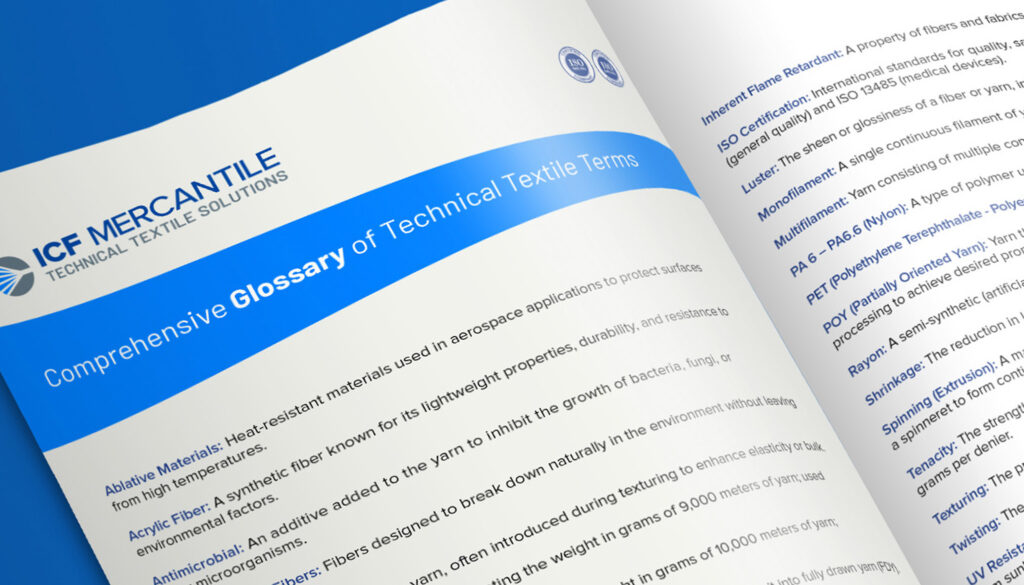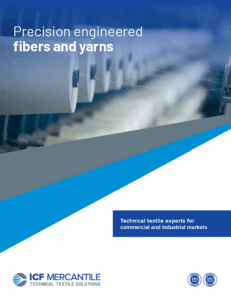In the technical textile industry, the terms and acronyms are vast and wide, often confusing and hard to remember. We attempted to simplify the terms in our very own glossary:
Ablative Materials: Heat-resistant materials used in aerospace applications to protect surfaces from high temperatures.
Acrylic Fiber: A synthetic fiber known for its lightweight properties, durability, and resistance to environmental factors.
Antimicrobial: An additive added to the yarn to inhibit the growth of bacteria, fungi, or other microorganisms.
Biodegradable Fibers: Fibers designed to break down naturally in the environment without leaving harmful residues.
Crimp: The waviness or curls in yarn, often introduced during texturing to enhance elasticity or bulk.
Denier (den): A unit of measure representing the weight in grams of 9,000 meters of yarn; used to indicate the fineness of the yarn.
dTex (Decitex): A unit of measure representing the weight in grams of 10,000 meters of yarn; used to indicate the fineness of the yarn.
Drawing: The process of stretching partially oriented yarn (POY), converting it into fully drawn yarn (FDY).
FDY (Fully Drawn Yarn): Yarn that is fully stretched and ready for end-use applications.
Fiber: A basic element of textiles, formed into yarns for further processing.
Filament: A continuous strand of yarn with virtually unlimited length.
High Tenacity (HT): Yarn or fiber with enhanced strength and durability, suitable for demanding applications.
HOY (Highly Oriented Yarn): Yarn that has undergone additional stretching to achieve high orientation, creating special properties.
Inherent Flame Retardant: A property of fibers and fabrics to resist ignition or slow the spread of flames.
ISO Certification: International standards for quality, safety, and efficiency, including ISO 9001 (general quality) and ISO 13485 (medical devices).
Luster: The sheen or glossiness of a fiber or yarn, influenced by its surface structure and light reflection.
Monofilament: A single continuous filament of yarn, typically thicker.
Multifilament: Yarn consisting of multiple continuous filaments twisted or bundled together.
PA 6 – PA6.6 (Nylon): A type of polymer used in suture and technical applications.
PET (Polyethylene Terephthalate – Polyester): A type of polymer used in medical and technical applications.
POY (Partially Oriented Yarn): Yarn that is partially stretched during manufacturing and requires further processing to achieve desired properties.
Rayon: A semi-synthetic (artificial) fiber made from cellulose.
Shrinkage: The reduction in length of fabric or yarn when exposed to heat during processing.
Spinning (Extrusion): A manufacturing process where raw materials are melted and forced through a spinneret to form continuous filaments.
Tenacity: The strength of yarn measured as the force in grams required to break it, expressed in grams per denier.
Texturing: The process of modifying yarn to give it bulk or stretch properties.
Twisting: The insertion of turns in yarn for functional improvement for subsequent process properties.
UV Resistance: The ability of a fiber or fabric to withstand degradation caused by ultraviolet radiation from sunlight.
Winding: The process of preparing yarn into a final package.



